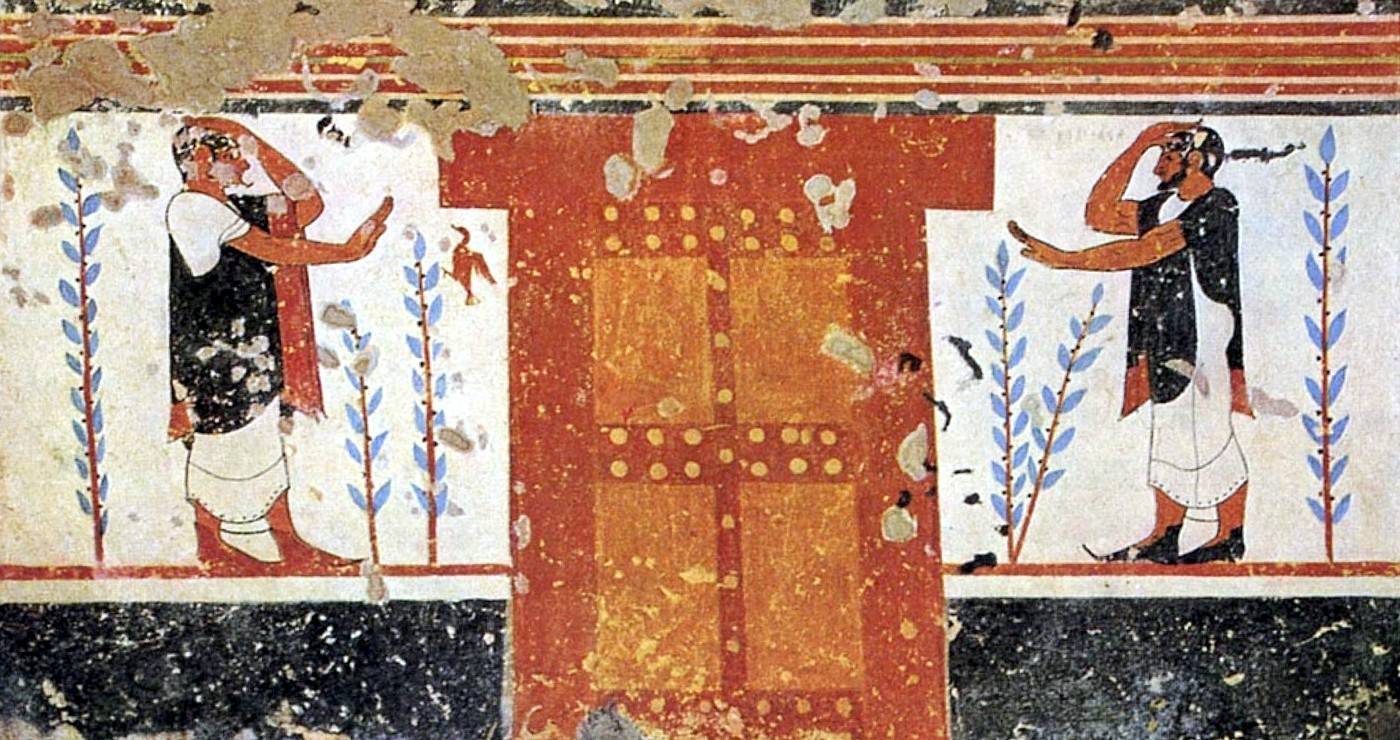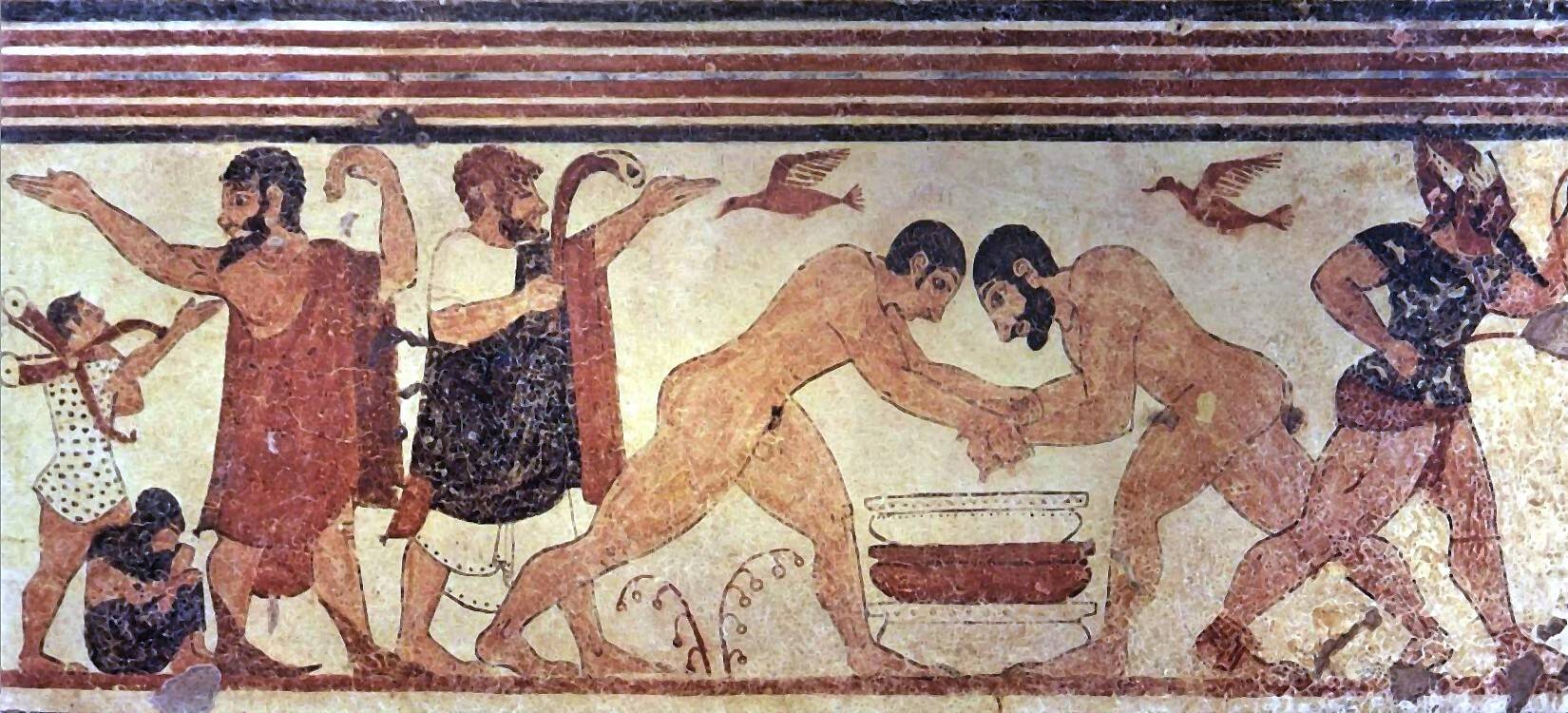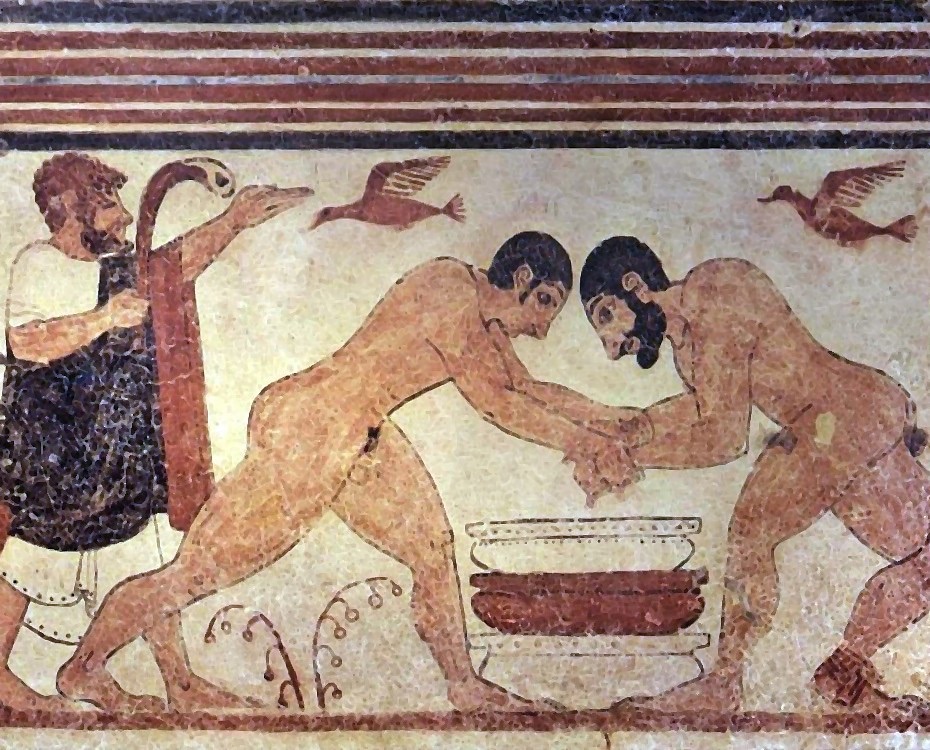The Tomb of the Augurs is an ancient Etruscan burial site, renowned for its intricate wall paintings. These frescoes provide a glimpse into the Etruscan culture and their beliefs about the afterlife. The tomb, located in Tarquinia, Italy, is one of many in the Necropolis of Monterozzi, a UNESCO World Heritage site. It dates back to the 6th century BC and showcases the artistic and architectural prowess of the Etruscans. The tomb’s name derives from the depiction of an augur, a priest and official in ancient Rome, within the frescoes, which suggests the importance of religious and ceremonial practices in Etruscan society.
Get your dose of History via Email
Historical Background of the Tomb of the Augurs
The Tomb of the Augurs was unearthed in 1832 by the archaeologist Campanari. He was among the first to systematically excavate the Etruscan necropolis of Tarquinia. The Etruscans built this tomb, a civilization predating the Roman Empire in central Italy. They were known for their rich culture and significant influence on Roman society, especially in religion and urban planning.
Not much is known about who specifically built the Tomb of the Augurs. However, it likely served as the final resting place for Etruscan nobility. Over time, the site fell into disuse and was eventually forgotten until its rediscovery in the 19th century. The tomb has not been the scene of any historically significant events since its creation, but it provides valuable insights into the Etruscan way of life.

Since its discovery, the Tomb of the Augurs has not been inhabited or used for any other known purpose. It remains a historical site, primarily for educational and research purposes. The frescoes within the tomb have been extensively studied, offering scholars a window into the Etruscan world.
The tomb’s discovery was pivotal in understanding Etruscan art and burial practices. The frescoes depict various scenes, including banquets and games, which suggest a belief in an active afterlife. The presence of the augurs in the paintings also indicates the importance of divination and ritual in Etruscan society.
Today, the Tomb of the Augurs stands as a testament to the Etruscan civilization’s sophistication. It attracts scholars and tourists alike, eager to learn about the customs and beliefs of this ancient culture. The site continues to be an important piece in the puzzle of understanding pre-Roman Italy.
About the Tomb of the Augurs
The Tomb of the Augurs is an underground burial chamber carved out of rock. Its walls are adorned with colorful frescoes that have survived millennia. The paintings depict a range of scenes, from banquets to athletic games, providing a narrative of Etruscan life and the afterlife.
The construction of the tomb involved excavating the soft tufa rock typical of the area. The Etruscans were skilled in creating these subterranean spaces, which protected the frescoes from the elements. The tomb’s layout includes a main chamber and a dromos, or entrance passage, both decorated with paintings.

Architectural highlights of the Tomb of the Augurs include the use of false doors and intricate details in the frescoes. These artistic elements were not only decorative but also symbolic, guiding the souls of the deceased to the afterlife. The frescoes themselves are executed with a mastery of color and form, showcasing the Etruscans’ artistic talent.
The building materials for the tomb were locally sourced, and the methods of construction reflect the Etruscans’ understanding of their environment. The preservation of the frescoes is due in part to the consistent climate within the tomb and the quality of the pigments used.
The Tomb of the Augurs is a prime example of Etruscan funerary architecture. Its design and decoration provide insight into the cultural and religious practices of the time. The tomb remains a significant cultural heritage site, reflecting the Etruscan civilization’s contributions to art and architecture.
Theories and Interpretations
Several theories exist about the Tomb of the Augurs, particularly concerning its frescoes. Some scholars believe the scenes depict the journey of the soul in the afterlife. Others interpret the images as a reflection of daily life and status in Etruscan society.
The presence of the augurs in the tomb’s name-giving fresco has led to debates about the role of these religious figures. The augurs were known to interpret the will of the gods by studying the flight patterns of birds. This practice may have been significant in Etruscan burial rituals.
Mysteries still surround the tomb, such as the identities of those buried within. No inscriptions have been found that provide clear answers. This has led to speculation based on the artifacts and the prominence of the tomb’s location.
Historians have matched the frescoes to known aspects of Etruscan culture found in historical records. This includes their banqueting customs, athletic games, and religious ceremonies. These interpretations help to build a picture of Etruscan society.
Dating of the Tomb of the Augurs has been carried out using stylistic analysis of the frescoes. The pigments and techniques used also provide clues to the tomb’s age. However, precise dating remains challenging due to the lack of organic material suitable for radiocarbon dating.
At a glance
Country: Italy
Civilization: Etruscan
Age: 6th century BC
Conclusion and Sources
Reputable sources used in the creation of this article include:
- Wikipedia: https://en.wikipedia.org/wiki/Tomb_of_the_Augurs
- World History Encyclopedia: https://www.worldhistory.org/etruscan_civilization/

